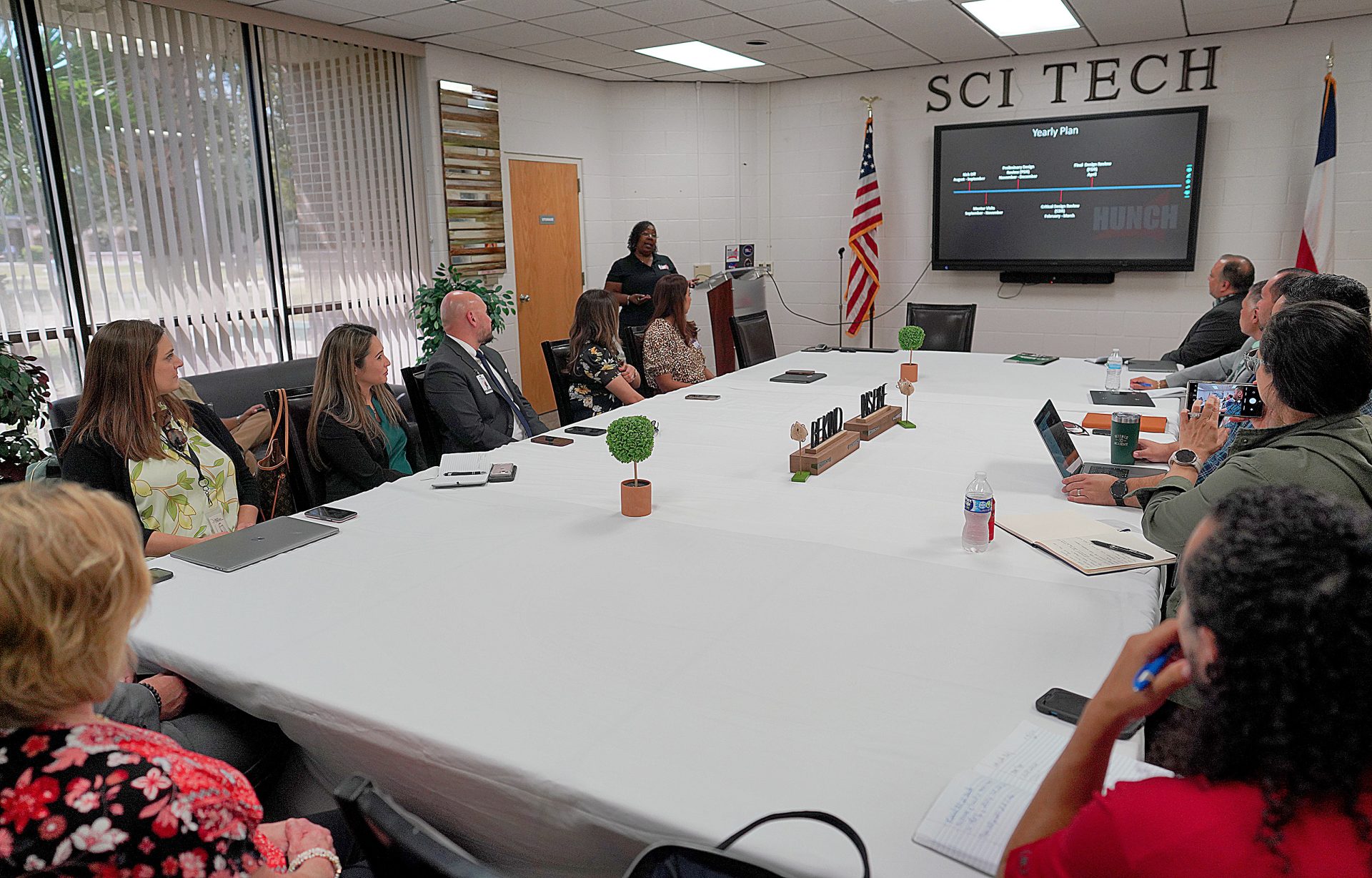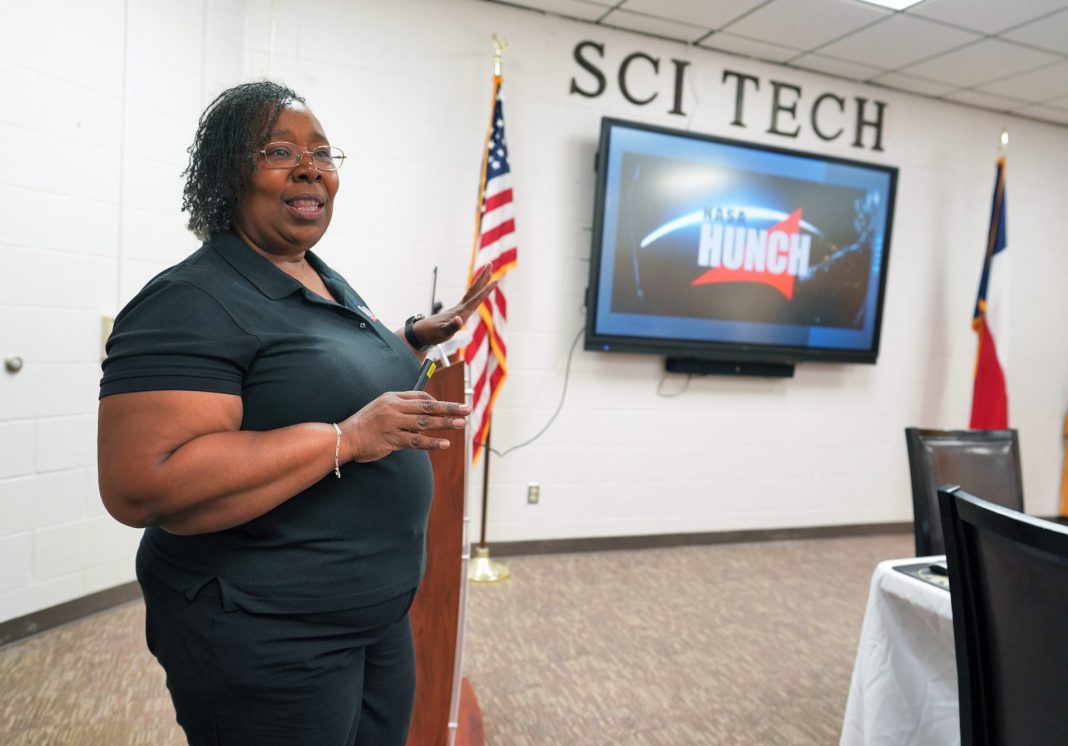|
Only have a minute? Listen instead
Getting your Trinity Audio player ready...
|

MERCEDES — Students around the Valley will soon have the chance to participate in the NASA Hunch program, where teams get hands-on STEM experience and hopefully get their project implemented by NASA on earth — or outer space.
At a meeting Monday at the South Texas Independent School District Science Academy, representatives from NASA presented to teachers and administrations about the NASA High School Students United with NASA to Create Hardware, or NASA HUNCH, program.
NASA HUNCH is a project based learning program where high school students learn 21st century skills and have the opportunity to launch their careers through the participation in the design and fabrication of real world products for NASA.
Johannes Starks, NASA HUNCH regional mentor, and Allison Westover, culinary program manager design and prototype engineer, expanded on the program, the opportunities it provides and answered questions from teachers and administrators in the meeting.
The NASA HUNCH program has eight different programs students can participate in. The programs are design and prototype, software, hardware, sewn flight articles, video and media, culinary, biomedical science and flight configuration.
Starks said during the meeting she was excited to come down to the Valley and present the opportunity to students.
“The whole goal of HUNCH is that we want to make sure that we engage our students in STEM education,” she said. “We know that all of those STEM skills are really essential for workforce readiness and for moving them to the next level. And we want to make sure that they’re trained to the latest technology.”
Implementing the NASA HUNCH program in her school in the Dallas/Fort Worth area, Starks said a student of hers had a product on the International Space Station.
She is currently traveling Texas looking for schools to participate. Science Academy was her last stop after visiting the McAllen, Mercedes and La Joya school districts.
“I think we’re gonna have a big response for the program (in The Valley),” Starks said. “I think that knowing that it aligns with the state objectives of the programs of study and the TEKS, it makes them more apt to want to join this program. It’s a great free (program), doesn’t cost the schools any money … it’s a free opportunity for them to do some work based learning and to get to interact with NASA engineers.”
The presentation focused on four programs, but students will have the choice of exploring all options.

Eric Gutierrez, principal at the Science Academy, said during the meeting that every senior at the school has a year-long Engineering Design & Development, or EDD, project and that the proposed NASA HUNCH program aligns with their own EDD project and timeline.
Guiterrez said he hopes for the participation in the program to be about upward of 10 to 15 teams of three.
Nelly Houston, CTE department head and an engineering teacher at Science Academy, said students in the EDD capstone project have the freedom to choose their own projects, which aligns with how the NASA program operates.
She said it has the potential to get students excited knowing their projects have a chance to make a difference in the world of NASA.
“Out of the eight programs that are available, I think our kids are going to gravitate to all of them because they all require engineering in some sort of way and problem solving to different aspects,” Houston said. “So whether it’s the biological one or the hardware or the software, we have all the programs here at Science Academy.”
If school districts decide to participate in the program, students will have a preliminary design review and a critical design review around February or March where working prototypes will be showcased. Upon review, a select number of teams will travel to the NASA Johnson Space Center in Houston and present their projects to NASA astronauts and engineers.
“I think that getting the realization that their product could be used by someone in the world actually, not even the world, in space … that’s really exciting for the kids to see that their work makes a difference in everyone’s life,” Houston said.




